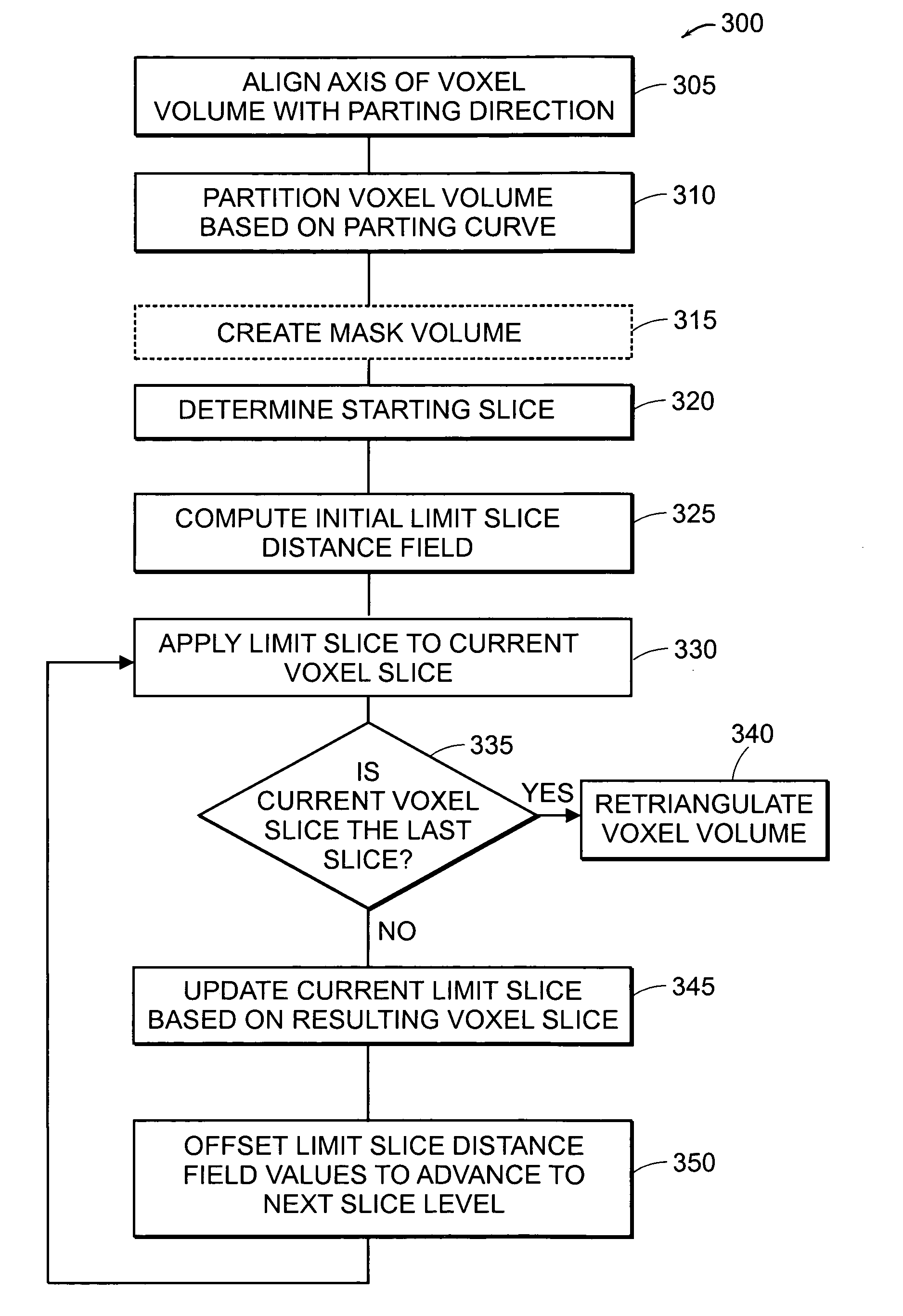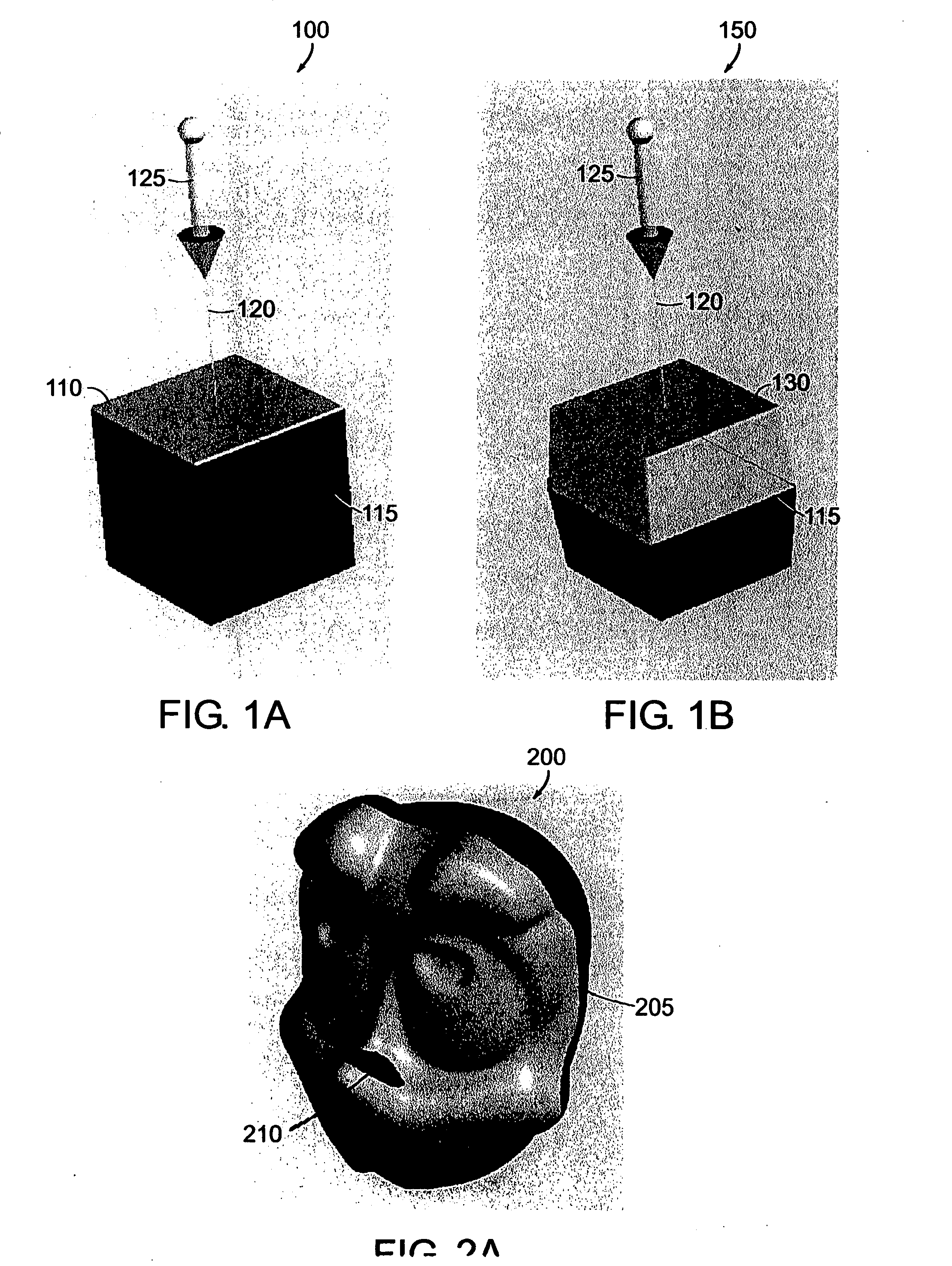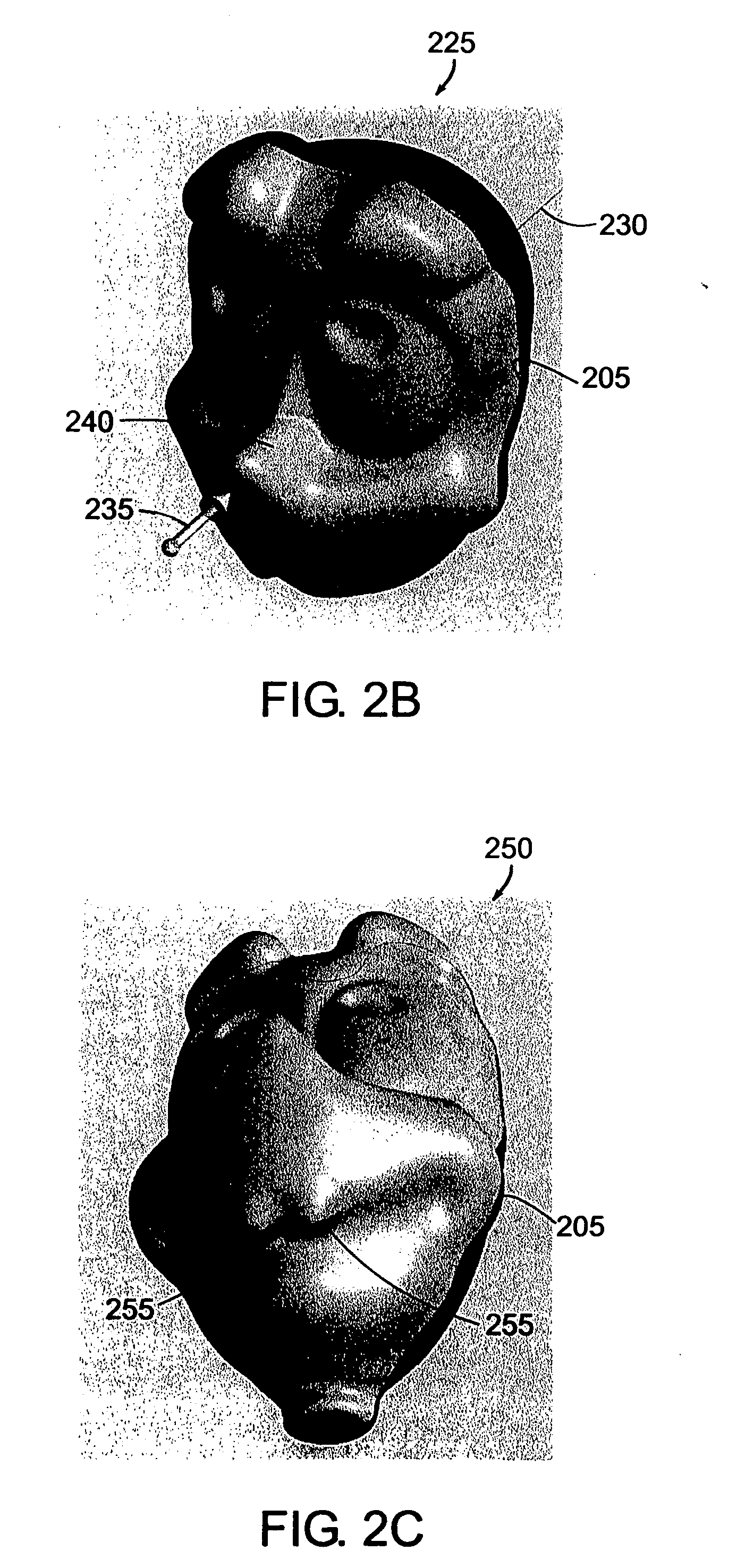[0012] The invention provides a method of automatically modifying a three-dimensional model, regardless of its shape, at any stage of the
design process. As a result, the designer is free to explore shape and form without the burden of anticipating manufacturing constraints during the early design stages.
[0013] Methods of the invention extend the flexibility of CAD systems by automatically adapting CAD models for compatibility with manufacturing processes. Methods of the invention provide high commercial value to designers of moldable objects and / or products in various markets, including toys, collectibles, athletic wear, and electronic devices, for example. The cost of designing products can be reduced, and manufacturing flexibility enhanced by using these methods.
[0018] The invention provides methods that work with an arbitrarily-shaped three-dimensional model, regardless of the sequence of steps that were used to generate the model. Both the model and the parting curve can have arbitrary shape. Thus, it is not necessary to use particular types of primitives to represent a given shape in the model. This provides an
advantage, since many primitives cannot be modified to add draft angle at all, while others require careful advance planning to support draft angle modifications. The flexibility of voxels to represent and modify any arbitrary 3D shape allows methods of the invention to operate on arbitrarily-shaped 3D models.
[0022] The use of
voxel representation is compatible with and complementary to the
haptic rendering of the model. In one embodiment, the method further includes the step of graphically and / or haptically rendering the model, for example, following the automatic modification according to the manufacturing constraint. For example, an embodiment of the invention includes haptically rendering the model of the object as a user edits the model.
Haptic rendering allows a user to “feel” the object as he modifies it, enhancing the interactivity of the
design process. The
haptic rendering process includes determining a force feedback corresponding to a position of a haptic interface device held by the user as the user edits the model. The force is delivered to the user via the haptic interface device. A
haptic rendering process is described, for example, in co-owned U.S. Pat. No. 6,552,722, by Shih et al., and co-owned U.S. Pat. No. 6,421,048, by Shih et al., both of which are incorporated herein by reference in their entirety. The haptic interface device may be, for example, the Phantom® haptic interface device manufactured by SensAble Technologies, Inc., of Woburn,
Mass., as described in U.S. Pat. No. 6,417,638, issued to Rodomista et al., the entirety of which is incorporated herein by reference. Other descriptions of haptic rendering processes and haptic interface devices include co-owned U.S. Pat. No. 6,084,587, by Aviles et al., and co-owned U.S. Pat. No. 6,191,796, by Tarr, both of which are incorporated herein by reference in their entirety. For example, the haptic interface device is a six degree of freedom force-reflecting tool that includes three powered axes and three free axes, all of which are tracked so that the position of a user connection element in the virtual environment of the model can be determined and a corresponding force applied. The haptic interface device, therefore, can double as a graphical interface device.
[0023] In one embodiment, the array of voxel values includes one-
byte integers. Furthermore, the array may consist entirely or essentially of one-
byte integers. Use of one-
byte integers allows for fast
processing, which is particularly important where the model is haptically rendered and / or where the number of voxels in the voxel volume is large. Of course, it is not necessary that the voxel values be integers. For example, the voxel values may be
floating point values of any precision.
[0033] In one embodiment, the processor is adapted to provide a haptic /
graphical user interface element (“widget”). The widget enables a user to interactively and intuitively select aspects of a manufacturing constraint and to provide a
signal for the automatic modification of the model to begin. In one embodiment, the widget allows a user to specify one or more of a draft angle, a parting curve, and a parting direction. The processor is preferably adapted to provide a graphical representation of the position, scale, and / or orientation of the widget in relation to the model. The processor may also be adapted to provide a haptic representation of the widget, including, for example, hotspots, detents, gravity wells, and / or other haptic cues to facilitate manipulation by the user.
 Login to View More
Login to View More  Login to View More
Login to View More 


